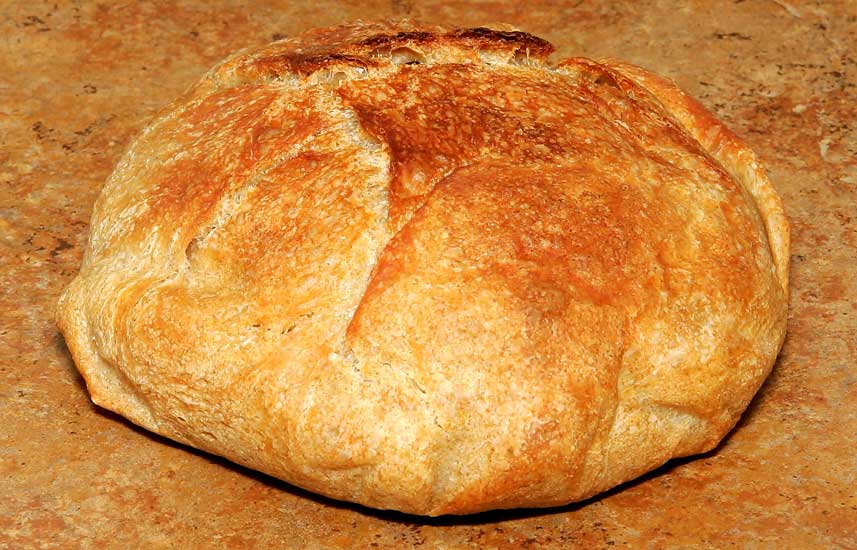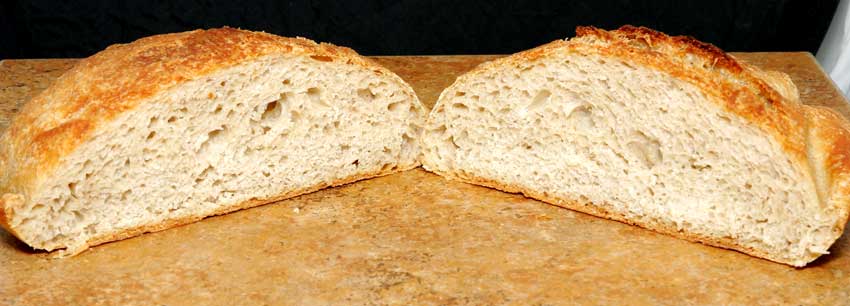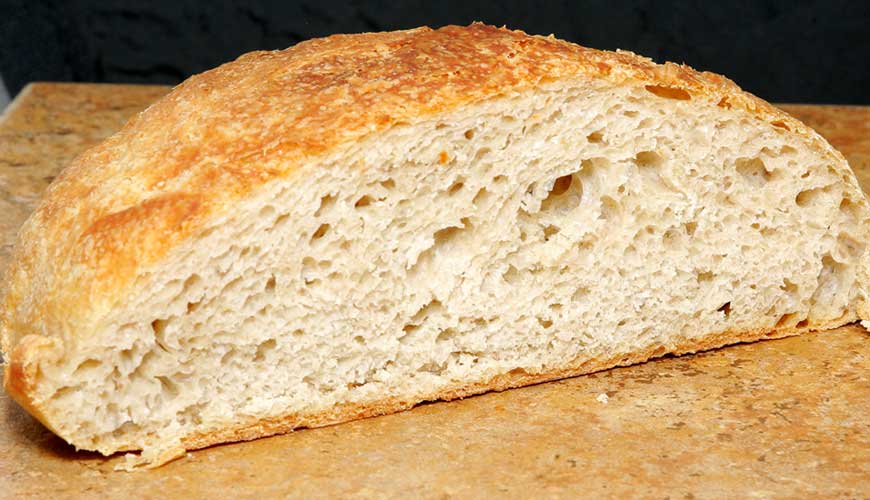February 25, 2014 - 5:19pm

Light Whole Wheat Bread
I've been dabbling at baking artisan type bread for a couple of months now, sometimes doing several loafs a week. Sometimes I get better and sometimes not, but I learn a little more with almost each loaf. Here are some pictures of a boule I did last night that is mainly unbleached white flour and part whole wheat flour that came out of the book "The New Artisan Bread in Five Minutes a Day".





It looks good. It is amazing that such a nice loaf can be made with such a simple method isn't it? I too am learning and like you some loaves are better than others. But the pleasure of eating your home baked bread cannot be beaten.
really made it when you can do it in say.... 3 minutes a day:-)
Happy baking
That sure looks nice, any details on the recipe? :)
Thanks for the comments.
MBaadsgaar, this receipt was the Light Whole Wheat Bread that I got out of "The New Artisan Bread in Five Minutes a Day" book. It's made with 5 1/2 cups of white flour and 1 cut of whole wheat flour and the usual water, salt and yeast. The dough from this bread was in the fridge for 5 days and it really had a good flavor by then. I baked it at 450 in a cast iron dutch oven (Lodge), about 20 minutes with the lid on and 20 minutes with it off (It might have been 25 with the lid on). This was only the 2nd one I've gotten a decent rise and I think it's because I used about 1 1/2 pounds of dough rather than the usual 1 pound the receipt calls for. I did another batch last night and used a bit more WW flour and some rye flour and baked a loaf this morning. I didn't get as much rise with it as I did this one but the flavor is really good. I think I need to go to a stiffer dough or a smaller pan so the dough doesn't spread out so much if I want to get as good a rise as a lot of others on here do. It makes it hard to make a good peanut butter and jelly sandwich with the bread being so narrow. :D
Mike
Thanks for the info :) Does your process involve stretch and fold's? I don't know the book, that is why I'm asking :)
I found here the last few days that S&F's really can hold a high hydration dough together. For me it was a 75% that went from focaccia-shape in first try, to loaf in the last ;)
Their instructions says to take a handful of dough out of the bucket (I feel that the handful is too small for the size loaves I want so I try to get a handful and a half or a bit more) and then stretch the top and tuck it underneath itself. You do this all the way around to form a ball with the seams tucked underneath. It's not the stretch and fold that I've seen explained to make real slack dough stiffer. I try not to over handle the dough so it doesn't squeeze out the bubbles that have formed. I put it in a oiled round bowl, seams down, to rise then when it's ready to go into the pre-heated oven I turn it upside down onto parchment paper with the seams up and lower the whole thing into the hot cast iron dutch oven to cook. I'm thinking that it may be the whole wheat that is limiting the rise but I like the flavor it adds. I'm pretty sure my yeast is good since I've only had the bottle about 2 months and I get lots of bubbles before I put it in the refrigerator.
I have a couple of those bowls that look like coiled ropes that you put flour in to proof the dough but I don't like how much flour is left on the dough from them so I don't use them any more. The oiled bowl seems to work pretty good and keeps the dough from drying out as well. I'm just not getting the oven rise that others get. Maybe it's time I try a different receipt and see if a different one works better.
Mike
I still think it looks really good, and it's not like it looks dense at all..
I keep the stretch and folds to the very beginning of the rise period, so I don't deflate too much either, but I haven't gotten perfect bubbles yet, so dunno if that is any good...
I actually proof in a plastic box, which I line with parchment paper. Then I use the parchment paper as a sling to lift it into a clay pot for baking.
These are things I am currently playing with for a dough that I mix, knead, and S&F in the evening, then let rise in fridge during the night, and then bake in a preheated pot in the morning :) The pot is called a Römertopf, and gives a pretty oblong loaf-shape. But just like you, I get mixed results with the height.